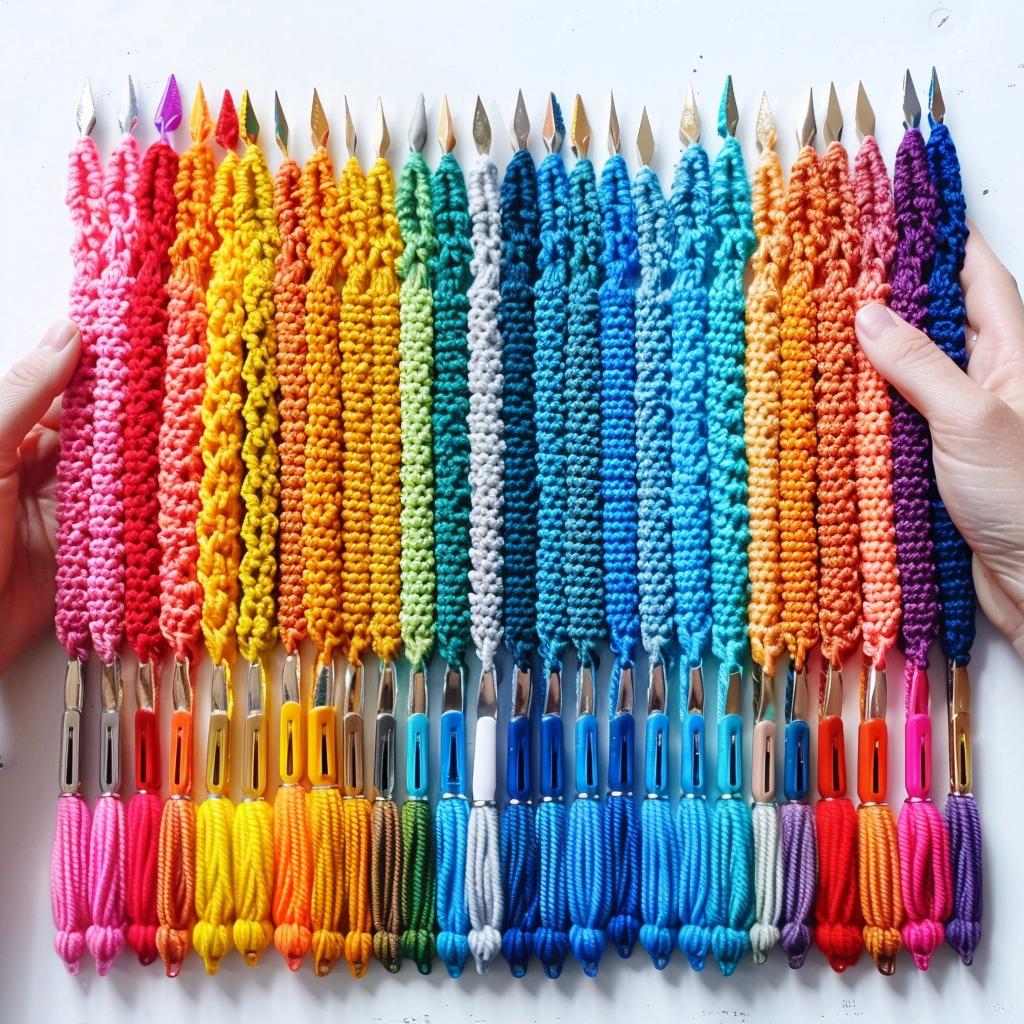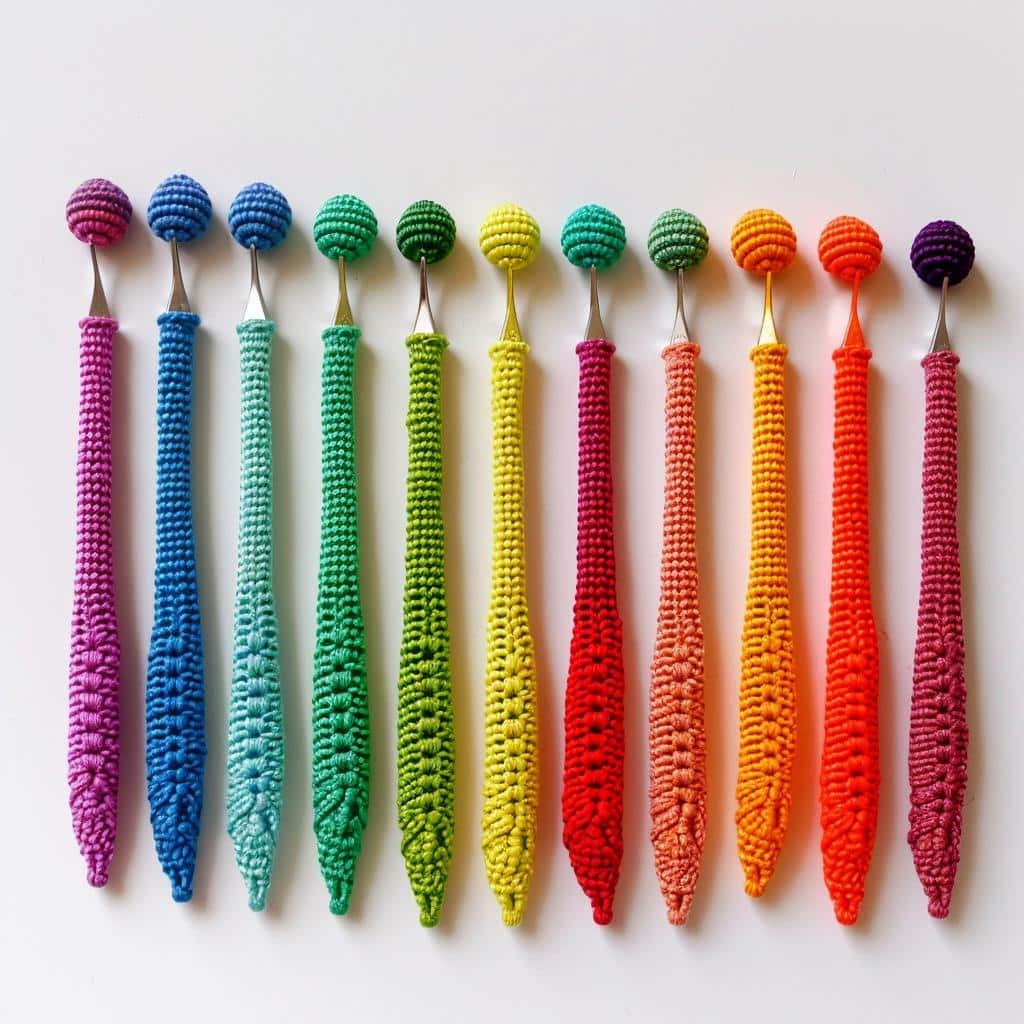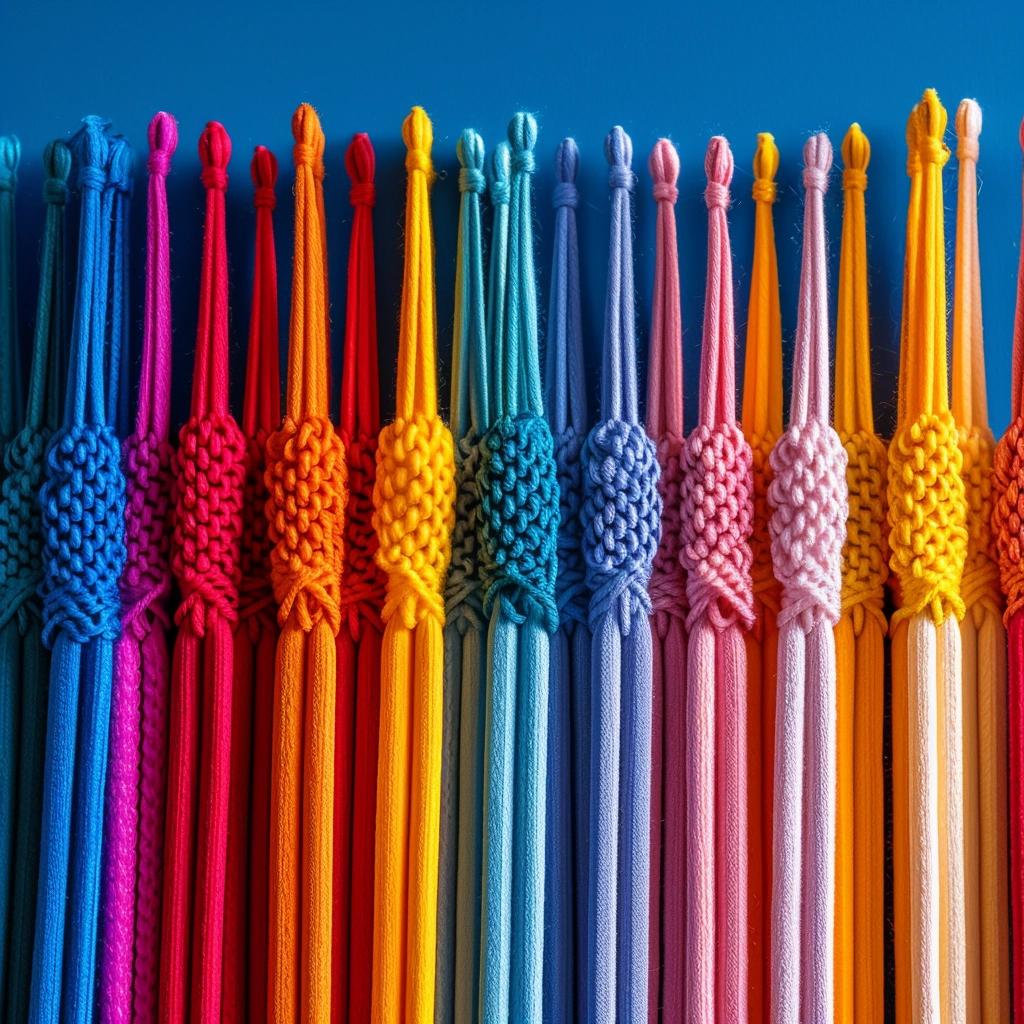Understanding Crochet Hook Sizes: The Basics
Ah, the crochet hook – that trusty little tool responsible for turning a simple string into a masterpiece. Trust me, mastering the art of crochet hook sizes is a game-changer. Whether you’re a seasoned pro or a newbie to the craft, understanding these little numbered (or lettered) wonders is crucial to your crocheting success.
Think of it like this: crochet hooks are the paintbrushes, and the yarn is the canvas. Just like a painter needs the right brush to create a masterpiece, a crocheter needs the right hook to bring their vision to life. But fear not, my fellow fiber enthusiasts! I’m here to guide you through the intricate world of crochet hook sizes, ensuring you never again have to worry about your stitches looking like they were created by a drunken sailor on a rocking ship.
Navigating the Crochet Hook Sizes Chart

Ah, the crochet hook sizes chart – a labyrinth of numbers, letters, and millimeters that can leave even the most seasoned crocheter scratching their head. But fear not, my yarn-loving comrades! With a little guidance, you’ll soon be navigating this chart like a pro.
First things first, let’s talk about the two main systems used to measure hook sizes: the metric system (using millimeters) and the U.S. standard system (using letters and numbers). Now, I know what you’re thinking: “Why can’t we just have one universal system?” Well, my friends, if the world made sense, we wouldn’t need crochet as a form of therapy, now would we?
- The Metric System: Simple and straightforward, just like your grandma’s famous apple pie recipe. Hooks are measured in millimeters, with the larger the number, the bigger the hook. Easy peasy, right?
- The U.S. Standard System: Ah, this one’s a bit more… let’s say, “unique.” It uses a combination of letters and numbers, with the letters representing the smaller hooks and the numbers representing the larger ones. It’s like a secret code that only true crochet enthusiasts can decipher.
Now, here’s a pro tip: most crochet patterns will list the recommended hook size, but don’t be afraid to experiment! After all, crochet is an art form, and who are we to limit our creativity?
Factors to Consider When Choosing a Crochet Hook Size
Choosing the right crochet hook size is like solving a delicious puzzle – there are a few key factors to consider. First up, the type of yarn you’re using. Thicker yarns require larger hooks, while thinner yarns call for smaller hooks. It’s like trying to fit a jumbo marshmallow through a tiny straw – not gonna happen, my friends.
Next, think about the project you’re working on. Are you making a cozy Afghan blanket or a delicate doily? The hook size can greatly affect the drape, texture, and overall look of your finished piece. Personally, I like my blankets to have a bit of a hug-like quality, so I tend to go for a larger hook.
And let’s not forget about gauge – that magical combination of stitches and rows that determines the size of your final product. Trust me, ignoring gauge is like ignoring your mother-in-law’s advice: it might seem like a good idea at the time, but you’ll regret it later.
Achieving the Perfect Gauge: How Hook Size Affects Your Project

Ah, gauge – the holy grail of crochet. It’s like the secret sauce that separates the amateurs from the pros. And guess what? Your hook size plays a major role in achieving that perfect gauge.
Think of it this way: the smaller the hook, the tighter the stitches. Imagine trying to cram a bunch of people into a tiny elevator – it ain’t pretty, folks. On the other hand, a larger hook creates looser, more open stitches, like a spacious ballroom where everyone can waltz freely.
But here’s the kicker: gauge isn’t just about the hook size. It’s a delicate dance between the hook, the yarn, and your personal tension. That’s right, your very own crochet-grip can make or break that gauge. It’s like trying to tap dance in slippers – you might be able to do it, but it’s gonna take some serious finesse.
Switching Hook Sizes Mid-Project: Tips and Techniques

Alright, my yarn warriors, let’s talk about switching hook sizes mid-project. Maybe you’ve realized your gauge is off, or perhaps you just want to add some extra texture and interest to your piece. Whatever the reason, changing hook sizes can be a tricky maneuver, but fear not! I’ve got some tips and tricks to make it as smooth as a well-oiled crochet hook.
First things first, pay attention to the transition. You don’t want a sudden, jarring change in your stitch pattern – that’s just begging for a crochet catastrophe. Instead, gradually increase or decrease your hook size over a few rows, blending the different stitches together like a master yarn artist.
Next, consider using a border or edging to hide the transition. A fancy crochet edging can do wonders for camouflaging any hook-size shenanigans you’ve pulled. Think of it as putting a fancy frame around your masterpiece – it just adds to the overall appeal.
And finally, don’t be afraid to experiment! Crochet is all about creativity and self-expression, so why not play around with different hook sizes and see what unique textures and patterns you can create? Who knows, you might just stumble upon the next big crochet trend!
Unlocking the Secrets of Crochet Hook Sizes: Key Takeaways
- Understand the two main systems for measuring hook sizes: the metric system (millimeters) and the U.S. standard system (letters and numbers).
- Consider the type of yarn, project, and desired gauge when selecting the appropriate hook size.
- Smaller hooks create tighter, denser stitches, while larger hooks result in looser, more open stitches.
- Gauge is a delicate balance between hook size, yarn weight, and your personal tension.
- When switching hook sizes mid-project, gradually transition over a few rows or use a border/edging to camouflage the change.
- Don’t be afraid to experiment with different hook sizes to create unique textures and patterns!
Conclusion

Well, my dear crochet comrades, we’ve reached the end of our journey into the mystical realm of crochet hook sizes. But fear not, for this is merely the beginning! Armed with the knowledge you’ve gained, you’re now equipped to tackle any project with confidence, whether it’s a cozy blanket or a mind-bogglingly intricate lace shawl.
Remember, crochet is an art form, and the hook is your brush. So go forth, my yarn warriors, and create masterpieces that would make even the most seasoned fiber artist swoon. And if you ever find yourself lost in the labyrinth of hook sizes, just take a deep breath, grab a warm cup of tea (or maybe something a little stronger, I won’t judge), and remember: you’ve got this.
Happy crocheting, my friends! May your stitches be as tight as your bond with your crochet crew, and may your finished projects bring joy and warmth to all who behold them.







